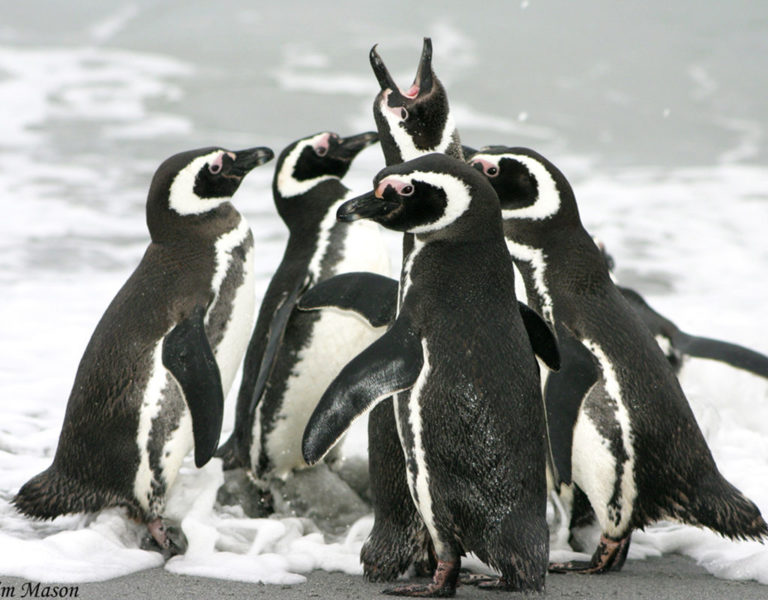
Magellanic
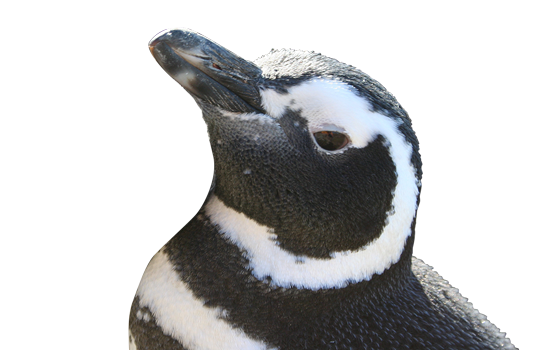
The Magellanic penguin is a summer resident at the Falkland Islands. It is found all around the coastline and nests in burrows in the peat adjacent to the coastline. Magellanic penguins have conspicuous black and white bands on their head, neck and breast. Their stout hooked bill is grey and black, and there is pink skin around the eye. Legs and feet are blackish. It is shyer than other Falkland penguins and will rush into its burrow or in to the sea if disturbed. Its local name is Jackass because of its loud, mournful call, resembling the braying of a donkey.

Vital Statistics
Spheniscus magellanicus
Height: 61-66 cm Length 65-72 cm
Weight: 4–7 kg Males weigh heavier than females
Life expectancy: 10-15 years in the wild
Breeding age: 3-5 years
Migratory: Migrate from the Falklands between April and September
Predators: Sea Lions are the main predators at sea. Striated caracaras may take small chicks from the burrows.
Population
No accurate survey has been undertaken at the Falklands, but numbers are estimated to be about 100,000 pairs, probably less than 10% of the world population.
Breeding cycle
Magellanic Penguins arrive at the Falklands in early September and leave about mid-April. Magellanic penguins breed in large or small colonies, burrowing into soft soil or peat on slopes facing the sea. The burrows slope downwards, are up to 2m (6 feet) deep and have a nest chamber slightly higher than the adjacent tunnel floor allowing rainwater to collect away from eggs. Two white eggs are laid between mid-October and mid-November. Juveniles fledge in February and by late April colonies are deserted. Care must be taken when walking through a colony to avoid putting a foot through the roof of a burrow.
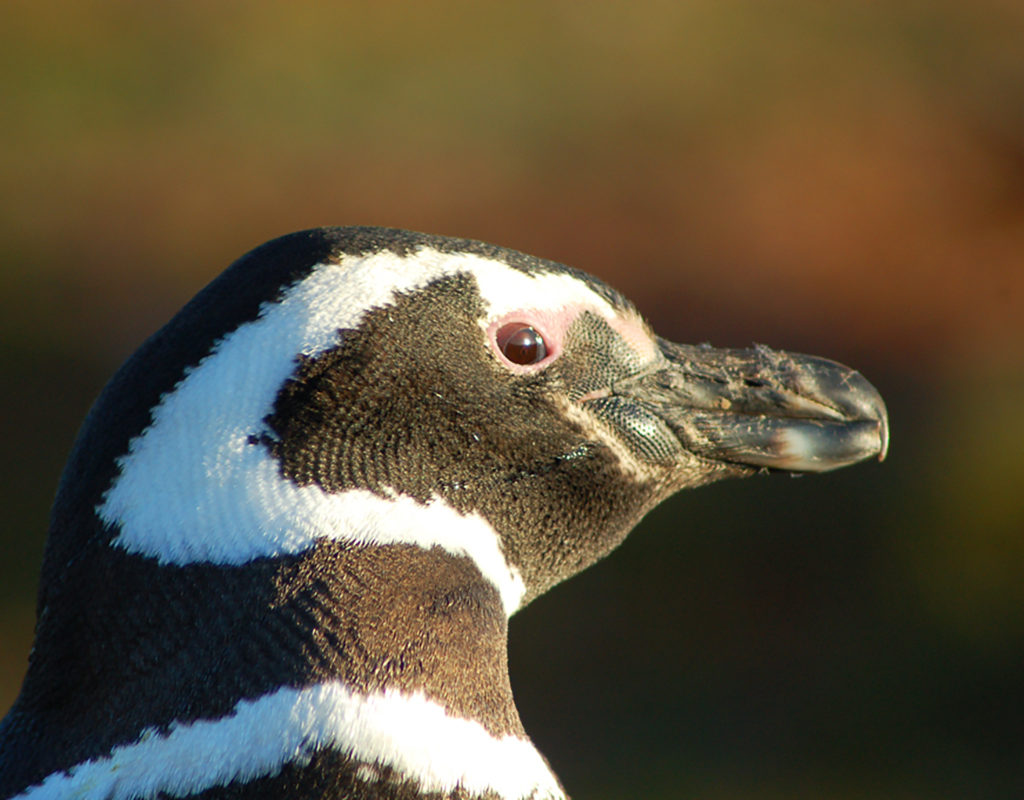
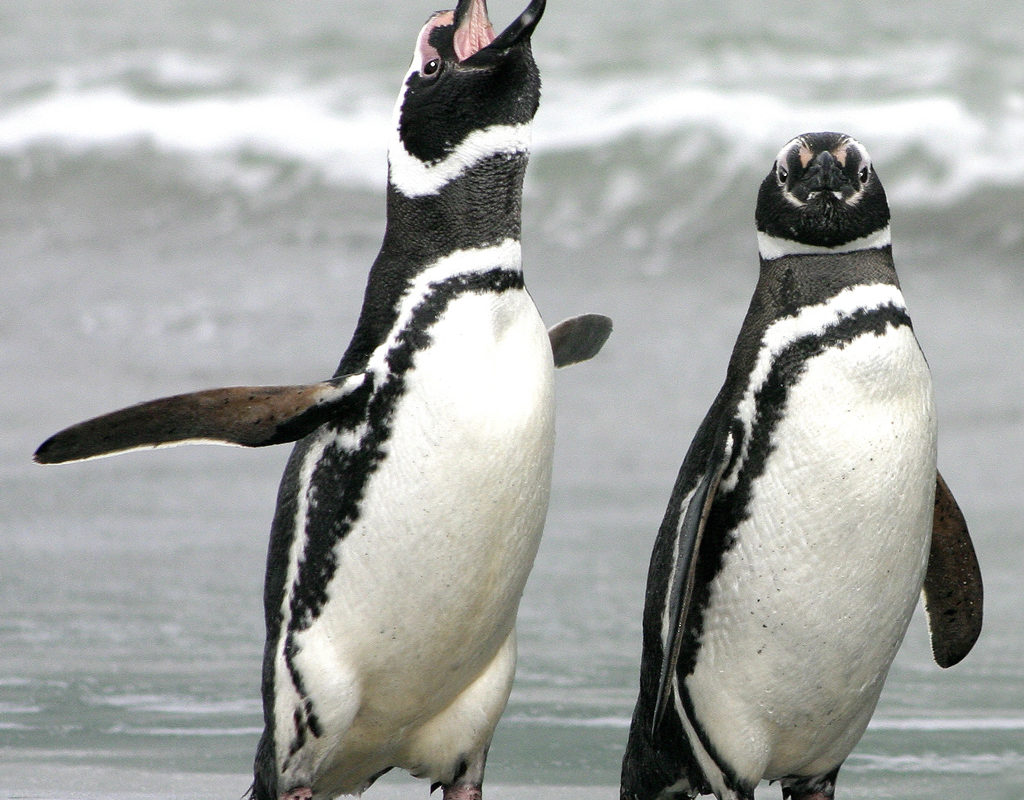
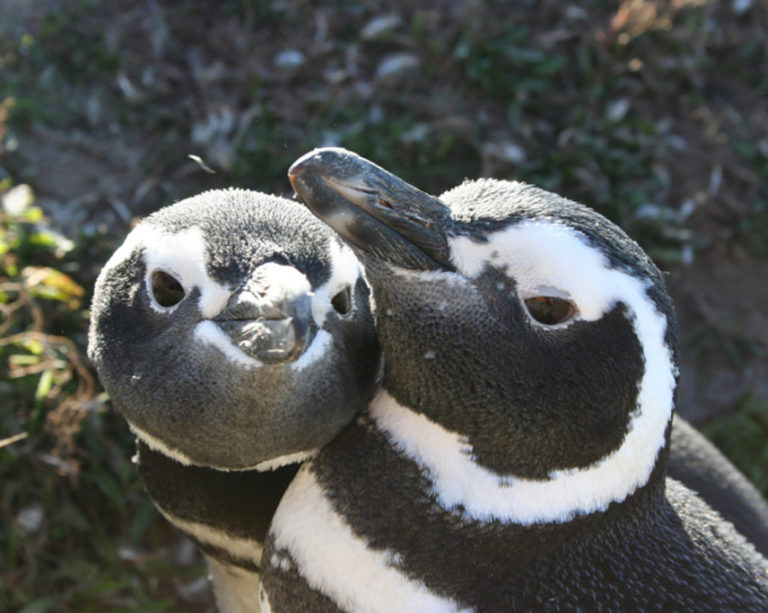
Going to sea
Magellanic penguins feed mainly on small fish and squid. They are great travellers and during the winter migration can reach as far north as southern Brazil, occasionally reaching Rio de Janiero. In one study, a bird travelled 2,661km (1663 miles) in 75 days.
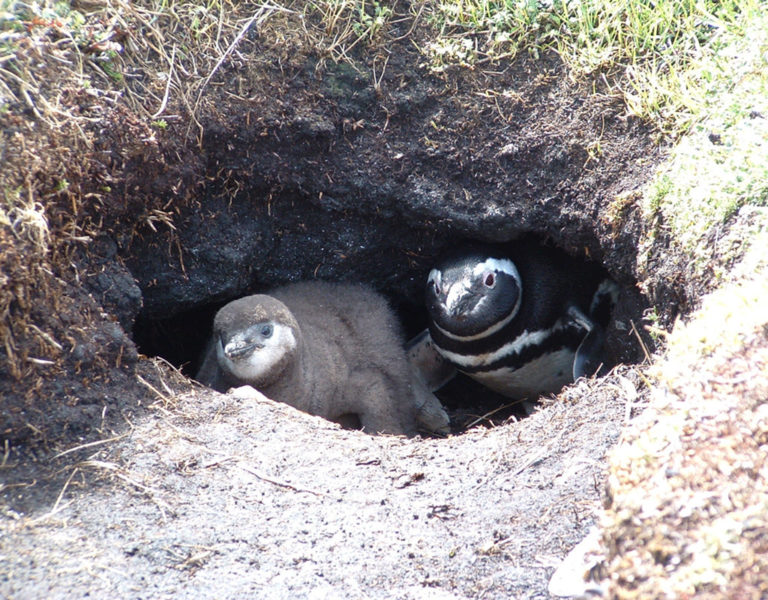
Conservation
This species has fluctuated in numbers in different parts of its range, but overall moderately rapid declines are thought to have been sustained and as a result it is listed as Near Threatened.
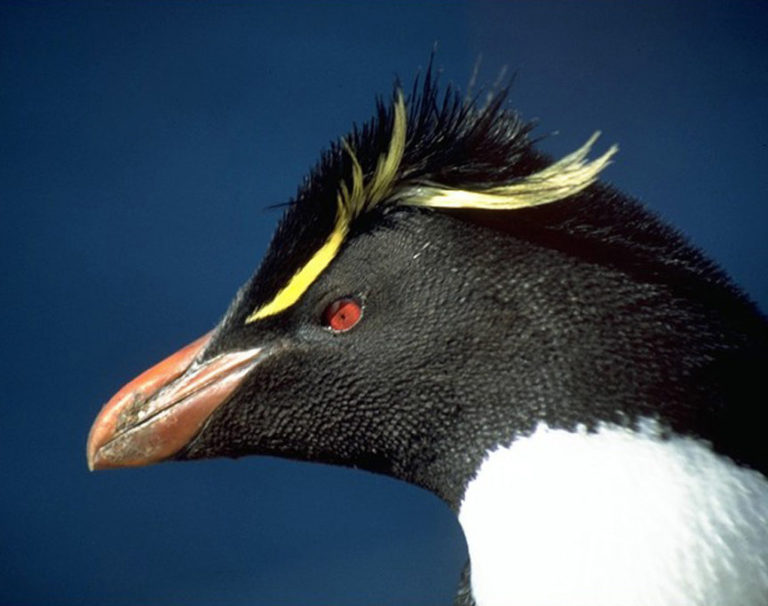
Rockhopper
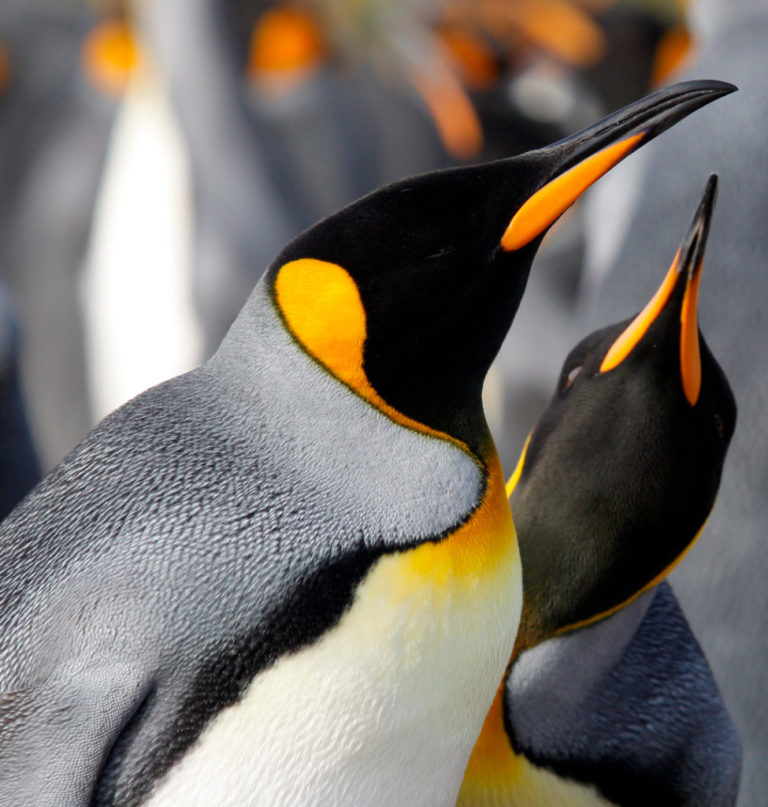
King
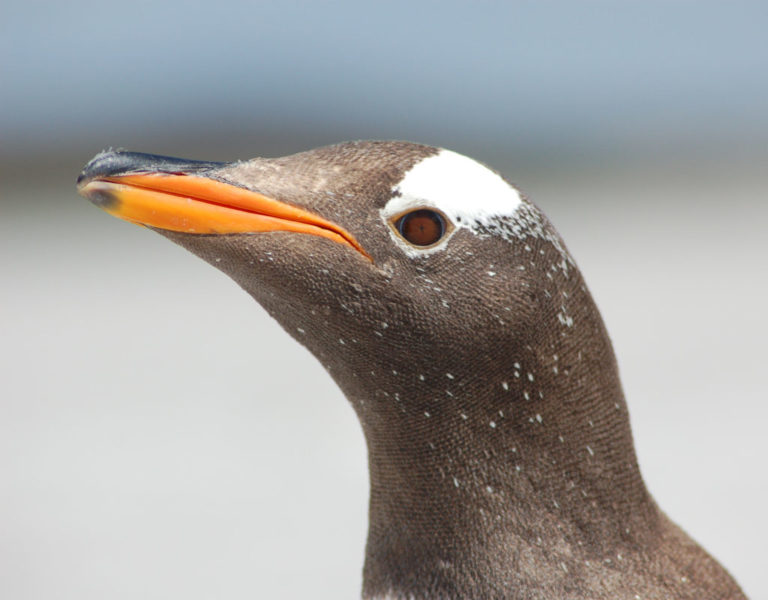
Gentoo

Macaroni




